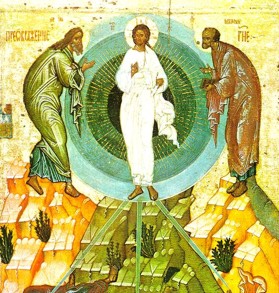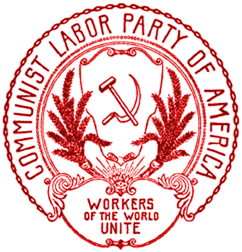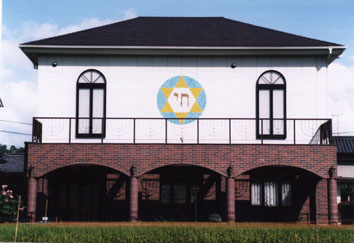Greenwich is a in
Fairfield County, Connecticut,
United States. As of the
2000 census, the town had a total population of 61,101. It is home to many
hedge funds and other financial service companies that have left Manhattan. Of the $1.2 trillion invested in hedge funds worldwide, $120 billion (10 percent) is managed in Greenwich
Government For more information, see History of Greenwich, Connecticut. The Town of Greenwich, settled in 1640 and incorporated in 1665.
During the
American Revolution, General
Israel Putnam made a daring escape from the British on
February 26,
1779. Although British forces pillaged the town, Putnam was able to warn
Stamford.
In 1983, the
Mianus River Bridge, which carries traffic on Interstate 95 over an estuary, collapsed, resulting in the death of three people.
Originally, Greenwich Point (locally termed "Tod's Point"), was open only to town residents and their guests. However, a lawyer sued, saying his rights to freedom of assembly were threatened because he was not allowed to go there. The lower courts disagreed, but the Supreme Court of Connecticut agreed, and Greenwich was forced to amend its beach access policy to all four beaches.
History Antares Investment Partners — headquarters. 333 Ludlow St.
Arch Capital Group, Ltd. — headquarters
Blyth, Inc. (BTH) — headquarters, 1 East Weaver St.; the nation's largest candlemaker, the company designs and markets home fragrance products, seasonal decorations, home décor and household convenience items internationally; 5,500 employees companywide, 45 in Connecticut; $1.6 billion in annual revenues (2005); CEO
Robert B. Goergen First Reserve Corp. — headquarters, a private equity firm with $12.5 billion under management that buys energy-related companies, founded by CEO William Macaulay.
Nestle Waters North America, division of the "world's biggest water bottler" (headquartered in Switzerland; Nestle Waters world division headquartered in Paris) accounting for 48 percent of its water sales and 10 percent of its revenue; with "
Poland Spring,
Deer Park,
Perrier,
S. Pellegrino and other brands it has 43 percent of the U.S. single-serve market. (All figures as of August 2006.)
Unilever Home & Pesonal Care - USA division — headquarters
United Rentals Inc. (URI) — headquarters, 5 Greenwich Office Park; the largest equipment rental company in the world, with more than 750 rental locations in 48 states, Canada and Mexico; 13,400 employees companywide, 400 in Connecticut; $3.6 billion in annual revenues (2005); CEO Wayland R. Hicks
Urstadt Biddle Properties, Inc. — headquarters, 1 East Weaver St.
UST Inc. (UST) — headquarters, 100 W. Putnam Ave.; makes and markets smokeless tobacco products, including Copenhagen, Skoal and Red Seal brands, and markets wine and sparkling wine; 5,111 employees companywide, including 300 in Connecticut; $1.8 billion in annual revenues (2005); CEO Vincent A. Gierer Jr.
Cambridge Solutions, Ltd.[7]; headquarters, 340 Pemberwick Road; is a strategic global outsourcing firm, one of the largest BPO compaines worldwide; 4,300 employees companywide; CEO
Christopher A. Sinclair W.R. Berkeley Corp. (BER) — headquarters, 475 Steamboat Road; a holding company for subsidiaries that sell property-casualty insurance; 4,961 employees companywide, 319 in Connecticut; $5 billion in annual revenues; CEO William R. Berkley
Large or distinctive companies The town has four beaches on the
Long Island Sound which are
Greenwich Point,
Byram Beach,
Island Beach (Little Captain's Island), and
Great Captain Island.
A single-visit beach pass for non-residents to Greenwich Point (locally termed "Tod's Point" after the previous private owners), which is on a peninsula and so includes picnic areas, a beach and small marina, is $10 per person and $20 per car. Tickets must be purchased at the town hall or the Eastern Greenwich Civic Center.
There is also a community sailing center and rental area located in the park. Bicycling and rollerblading are popular sports on the trails and paths in the summer.
The town owns the Griffith E. Harris golf course. The 18-link course is named after "Griff" Harris, first selectman from 1952 to 1958. There are also five country clubs in town with golf courses. The
Dorothy Hamill Rink is also in town.
Recreation Calf Island, a 29-acre island about 3,000 feet from the Byram shore in Greenwich, is open for visitors although as of the summer of 2006 it was getting relatively few of them.
Islands Greenwich Symphony Orchestra. Begun in 1958 as the Greenwich Philharmonia, it became fully professional by 1967. The orchestra's 90 members perform at the Dickerman Hollister Auditorium at Greenwich High School. It also performs a pops concert in the summer. Emanuel Ax, Barry Douglas, Pamela Frank, John O'Conor, Peter Serkin, and Dawn Upshaw. David Gilbert has been music director and conductor since 1975 and is also the director of the Bergen (NJ) Philharmonic and the Senior Concert Orchestra of New York. He lives in Nutley, N.J.
Greenwich Choral Society, founded in 1925, has performed locally and elsewhere, including in New York City (at St. Patrick's Cathedral, Carnegie Hall, St. Thomas Church, and the Cathedral of St. John the Divine), and Europe. It has also performed several times with the Greenwich Symphony, New Haven Symphony, New Haven Chorale, and Stamford Symphony, as well as at the Ives Festival in Danbury. The chorus previewed
Dave Brubeck's La Fiesta de la Posada, and has commissioned works by James Furman, Stephen Paulus, Rob Mathes, and Michael Schelle. In 2000 the chorus premiered a work by
Adolphus Hailstork,
Songs of Innocence, commissioned especially for the 75th anniversary season. The current music director and conductor is Paul F. Mueller. Notable past conductors include Lowell Beveridge, Jack Ossewaarde, Vernon de Tar, Louie L. White and Richard Vogt.
The Bruce Museum is a town-owned institution with sections devoted to art and natural history.
Greenwich Arts Council Alliance Française of Greenwich Arts and culture See also: Education in Greenwich, Connecticut Education According to the
United States Census Bureau, the town has a total area of 174.2
km² (67.2
mi²). 123.9 km² (47.8 mi²) of it is land and 50.3 km² (19.4 mi²) of it (28.88%) is water. In terms of area, Greenwich is twice the size of Manhattan. The town is bordered to the west and north by Westchester County, New York, to the east by the city of Stamford, and to the south by Long Island Sound.
Greenwich is divided into several small sections:
Each, with the esception of Byram, has its own
ZIP Code and
Metro North train station.
A curious aspect of Greenwich's position in the southwestern "tail" of Connecticut is that by traveling north, south, east or west from any point in town, one will eventually reach the State of New York. Westchester and Putnam Counties lie to the north and west. Nassau County is directly south across Long Island Sound, and a long boat ride due east will land you on the northeast branch of Suffolk County, Long Island.
Round Hill, with an elevation of more than 550 feet, was a lookout point for the Continental Army during the American Revolution. The Manhattan skyline is visible from the top of the hill.
Old Greenwich
Riverside
Cos Cob
Greenwich
Byram (formerly East Port Chester)
Geography Greenwich Time - daily newspaper based in Greenwich; published by Southern Connecticut Newspapers Inc. out of Stamford, a subsidiary of the
Tribune Company, which also owns The Advocate of Stamford and
The Hartford Courant. Some sections are identical to the same sections in The Advocate, including the arts and business sections.
Greenwich Citizen - the older weekly in town, tabloid-sized and a part of the Brooks Community Newspapers chain, now owned by
Media News Group Inc., which also owns the daily
Connecticut Post in
Bridgeport, Connecticut.
Greenwich Post - weekly broadsheet, part of the Hersam Acorn chain of local weeklies.
Greenwich Magazine, owned by Moffly Publications, which publishes other local magazines, including
New Canaan-Darien Magazine and
Westport Magazine.
WGCH-AM 1490 radio station; 1,000 watts
 Media based in town
Media based in town The town is served by the
Metro-North Railroad (the four stations, from west to east, are
Greenwich,
Cos Cob,
Riverside and
Old Greenwich) and is approximately a 40 minute
train ride to
Grand Central Terminal in
Manhattan on the express train and a 50 minute ride on the local.
Interstate 95 (one of the busiest highways in the world) goes through the southern end of town, and there are four exits from I-95 in Greenwich, exits 2 through 5. The
Boston Post Road (also known as East or West Putnam Avenue or simply Route 1) also goes through town, as does the
Merritt Parkway, although the Merritt Parkway is a considerable distance from the downtown area. Greenwich is also accessible by Metro-North Railroad.
Amtrak stops in the adjacent town of Stamford.
Two bridges in Greenwich were among 12 in the state listed in "critical" condition by state safety inspectors as of August 2007. The Riversville Road bridge, built in the 1950s, now has a weight limit of 3 tons, but as of
August 5,
2007, the bridge had not been inspected in over two years (in March 2005), according to state records obtained by
The Hartford Courant, although a state official said the bridge was inspected in August 2005 and would be inspected again in August 2007. In the March 2005 inspection, the bridge's above-ground structure was deemed to be in critical condition, with other components in poor condition. The Bailiwick Road bridge in town was closed in April 2007 and remained closed as of August 2007 due to storm damage. The ratings for the two bridges were worse than the Interstate 35W bridge in Minneapolis, which collapsed during rush hour on
August 1,
2007.
Transportation As of the
census² of 2000, there were 61,101 people, 23,230 households, and 16,237 families residing in the town. The
population density was 493.2/km² (1,277.6/mi²). There were 24,511 housing units at an average density of 197.9/km² (512.5/mi²). The racial makeup of the town was 90.02%
White, 1.66%
African American, 0.09%
Native American, 5.18%
Asian, 0.03%
Pacific Islander, 1.46% from
other races, and 1.57% from two or more races.
Hispanic or
Latino residents of any race were 6.29% of the population.
There were 23,230 households out of which 33.5% had children under the age of 18 living with them, 59.4% were
married couples living together, 8.0% had a female householder with no husband present, and 30.1% were non-families. 24.8% of all households were made up of individuals and 9.9% had someone living alone who was 65 years of age or older. The average household size was 2.60 and the average family size was 3.12.
In the town the population was spread out with 25.4% under the age of 18, 4.1% from 18 to 24, 28.8% from 25 to 44, 25.7% from 45 to 64, and 15.9% who were 65 years of age or older. The median age was 40 years. For every 100 females there were 90.1 males. For every 100 females age 18 and over, there were 85.2 males.
Demographics The median income for a household in the town is $99,086, and the median income for a family is $122,719. Males have a median income of $95,085 versus $47,806 for females. The per capita income for the town is $74,346. About 2.5% of families and 4.0% of the population were below the
poverty line, including 4.1% of those under age 18 and 3.2% of those age 65 or over.
Both the Official AENGLC Wealth Value and the CPR AENGLC Wealth Value show Greenwich as having the highest wealth value in Connecticut at over $430,000 per person. However, the claim of "wealthiest town" is misleading. Three other nearby towns have higher per capita income and four have higher median household incomes than Greenwich. Per capita income is higher in New Canaan ($82,049), Darien ($77,519) and Weston ($74,817) than in Greenwich, with Westport ($73,664) almost on par according to the 2007 AENGLC.
In addition, according to the CERC town profiles at CT.Gov., the median incomes of these towns in 2005 were: $164,076 for Weston, $160,178 for Darien, $158,091 for New Canaan, $135,542 for Westport and $112,041 for Greenwich, respectively. According to CERC Greenwich also has a higher poverty rate and more subsidized housing than these other towns. However it should be noted that Weston, New Canaan, and Darien have significantly smaller populations than Westport and Greenwich. Towns with larger populations have more people in various income brackets that skew the median income. On the above ranking, the town Weston (which has the smallest population) has the highest median income and the town with the lowest, Greenwich, has the highest population.
The AENGLC takes into account residential and commercial real estate in comparing each town's respective total tax base in order to allocate State aide to poor towns. In Connecticut, public education is funded by local property taxes. Therefore, the AENGLC is used to evaluate a town government's ability to fund public education via property taxes, not the actual wealth of town residents. Since the town of Greenwich has much more commercial real estate that the other affluent local towns, this skews the AENGLC of Greenwich away from the value of residential or personal real estate as compared to the nearby towns.
Greenwich was the
highest income place with a population of 60,000 or more in 2000. However, using the list of the 100 richest places in the United States with at least 1,000 households yields a different result. This is the most common list used for referring to the richest communities in the country, as it eliminates any places with insignificant populations. On this list Greenwich ranks 56th after New Canaan at 32nd, Darien at 44th, and Weston at 55th. See
Highest income places in the United States.
The town's 2006 Grand List (tax rolls) includes more than $1 billion in assessed values for automobiles, which raised $5.5 million in revenue for the town. Overall, there were 2,337 cars worth more than $50,000 on the list, and there were 3,769
BMWs, 3,474
Mercedes-Benzes, 931
Porsches, 94
Ferraris, 90
Bentleys, 65
Aston Martins, 40
Maseratis, 39
Rolls-Royces, four registered
Maybachs (a brand that can retail for up to $385,000), and one
Lamborghini. Greenwich has the only authorized
Aston Martin dealership in the state.
Wealth These four Greenwich art collectors were listed in the 2006
Art News magazine list of 200 top collectors:
Reba and Dave Williams, who joined the list in 2005 and whose primary residence is listed as New York City, like "American prints."
Wealthiest art collectors in town For further information see: People of Greenwich, Connecticut Due to its affluence and convenient location near New York City, Greenwich has long been associated with or has been home or birthplace to well-known people in various fields. Actor/director
Ron Howard, Jack Nicholson, Gary "Baba Booey" Dell'Abate and Adam Sandler also lives in town, as did
George C. Scott, and
Mel Gibson also has a home in town. Athletes including
Steve Young,
Frank Gifford,
Allan Houston, and
Bobby Bonilla live in town, and the late authors
Truman Capote,
Taylor Caldwell,
Anya Seton,
Lawrence Riley and
Howard Fast were residents. The
Barney Family, heirs to the
Smith Barney fortune, resides in Greenwich.
State Attorney General
Richard Blumenthal is a resident, and
Boss Tweed used to be, as was former President
George H.W. Bush. The former and current CEO of
PepsiCo, are residents.
Edward S. Lampert, billionaire hedge fund manager and chairman of Sears Holdings Corp., resides in Greenwich.
Donald J. Trump has a home in town, as does a New York real-estate rival,
Leona Helmsley. The late
Louis Rukeyser lived in town, and
Rita Cosby, a television host on
MSNBC grew up here, as did actresses
Glenn Close and
Bijou Phillips.
Matt Lauer, an anchor on
The Today Show on NBC went to high school in town.
Regis Philbin resides here, as do
Diana Ross,
Tommy Hilfiger, and
Kathie Lee Gifford. Pro wrestling promoter
Vincent Kennedy McMahon and his family live in town. Wrestler
Paul Levesque along with his wife
Stephanie McMahon live here. Iranian Empress
Farah Pahlavi had a residence in Greenwich, up until 2001, when she moved to the D.C. area, due to the expenses of her home and the incapability of living there after the death of Princess
Leila Pahlavi.
Ivan Lendl is also a resident of Greenwich.
 Gospel accounts
Gospel accounts




 Facts
Facts


 History
History Honky tonks
Honky tonks See also
See also Elections:
Elections:  Media based in town
Media based in town